By learning to make this easy Lemon Bread at home, you can enjoy a Starbucks copycat classic without the steep take-out prices. Fresh lemon juice and zest take a simple quick bread recipe to the next level, drizzled with a sweet glaze and packed with flavor. Whether served for breakfast or dessert, this moist, decadent loaf makes the best treat!
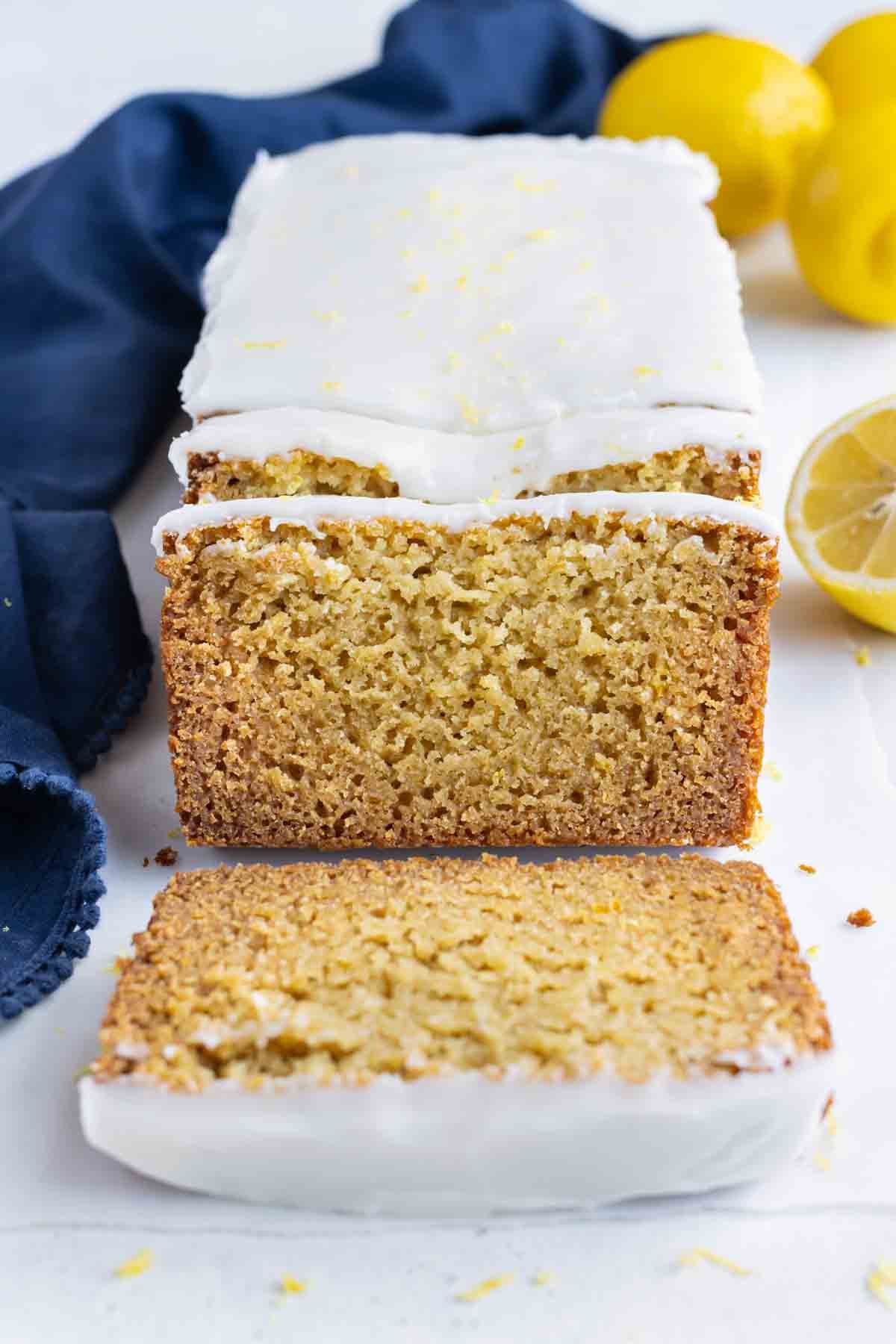
I must confess, I have a problem.
Anytime I start even THINKING about the popular Starbucks lemon loaf, my mouth starts to water. It’s a guilty pleasure.
But frequenting the coffee shop can often result in pretty drastic consequences for the wallet (and the waistline)! So much like I do with any good restaurant recipe, I wanted to recreate an inexpensive, healthier, and perhaps even BETTER version at home!
I’ve succeeded before in making a healthy copycat recipe of the amazing Egg White Bites from Starbucks. And I’m happy to say that this sweet-glazed Lemon Bread recipe will not disappoint, either!
Between my lovely kitchen assistant and I, it was tested, tweaked, and tasted almost 10 times before we got it just right.
The final result? Moist, tender, and packed with zesty lemon flavor, with a sweet and tangy glaze drizzled on top.
It makes the PERFECT recipe for spring or summer, served as a decadent brunch bread or even for dessert.
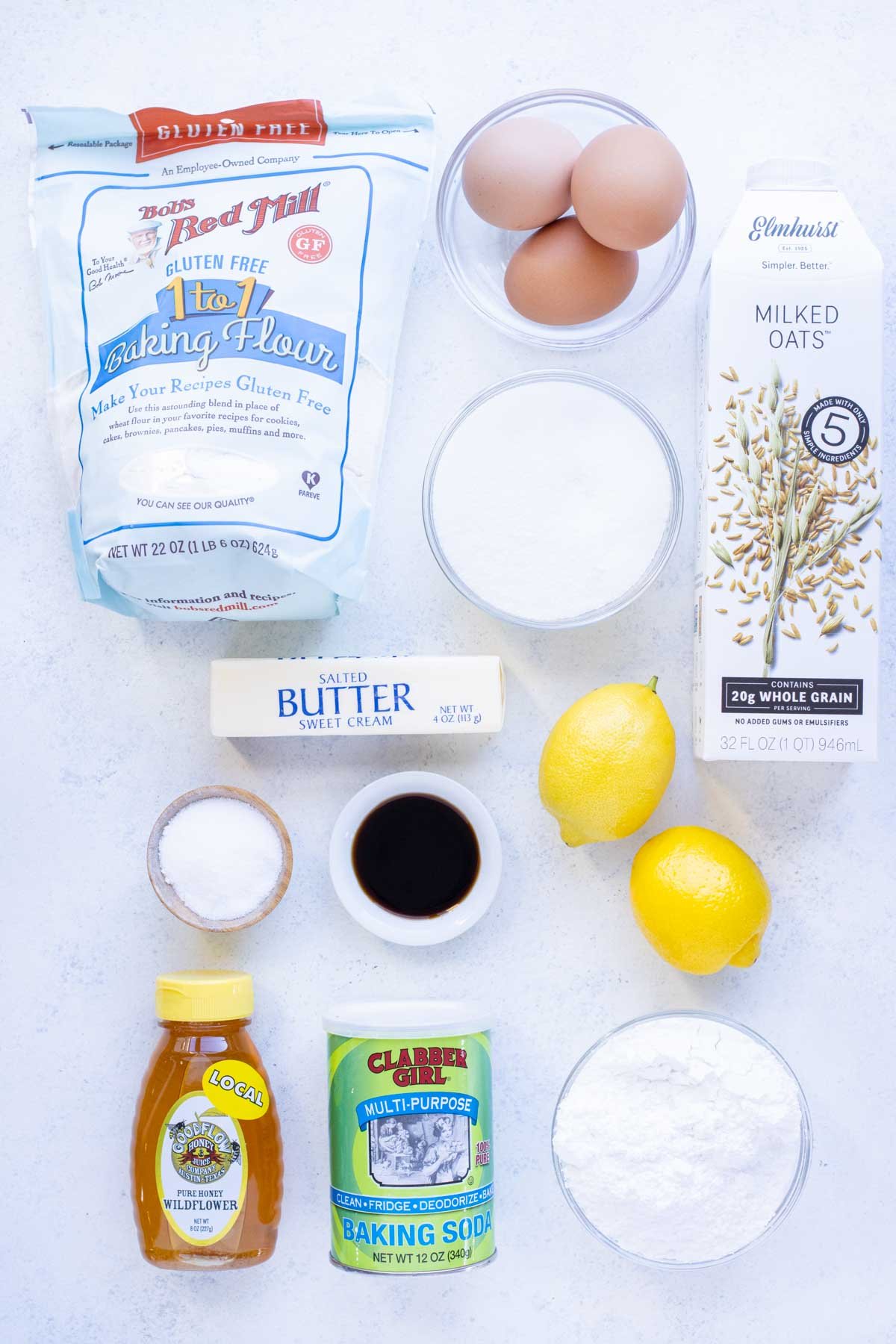
Ingredients
To make this easy Lemon Bread recipe you need:
- Flour. A gluten-free 1-to-1 baking blend will give you the best texture. For this recipe, Bob’s Red Mill was used. If not concerned with gluten, you can also use a mix of half all-purpose flour and half cake flour. All-purpose flour alone will do too, but may give the bread a slightly less delicate texture.
- Lemons. Look for 3 large, fresh lemons that have a little bit of give when squeezed gently. Both the juice and zest are needed for this recipe, so know How to Zest a Lemon before juicing it.
- Sugar. Normal white granulated sugar is used for the loaf as a sweetener. Powdered confectioner’s sugar is also used for the glaze.
- Honey. As a healthier sweetener, honey brings an extra depth of flavor and a binding property that sugar alone can’t add.
- Butter. This adds flavor and richness to the loaf, and helps encourage a light, tender texture.
- Milk. Either regular or plant-based milk will work, but make sure to use a full-fat variety! Oat, soy, and cashew milk are all great options.
- Eggs. Two whole eggs plus 1 yolk are needed. The yolk provides a rich yellow color and extra moistness, and the spare whites can be saved to make Egg White Bites later.
- Glaze. This is made up of a simple mix of powdered sugar, milk, and lemon juice. The glaze can be omitted entirely, however, if no added sugar or a plain lemon loaf is preferred.
How to Make Lemon Bread
These are the steps to follow to make this Lemon Bread recipe. Please see the recipe card below for more detailed ingredient amounts.
Wet and Dry
Add the flour, baking soda, salt, and lemon zest to a large bowl, and whisk until evenly dispersed.
You can also use a sifter to mix everything but the zest, and then carefully mix the zest in with the whisk. Sifting ensures there are no lumps, that everything combines evenly, and that the bread can have a lighter, more tender texture.
In a separate bowl, whisk together the melted butter, sugar, honey, milk, lemon juice, and vanilla extract. When the butter has cooled into the mix, slowly whisk in the eggs and egg yolk until smooth and fully incorporated with each other.
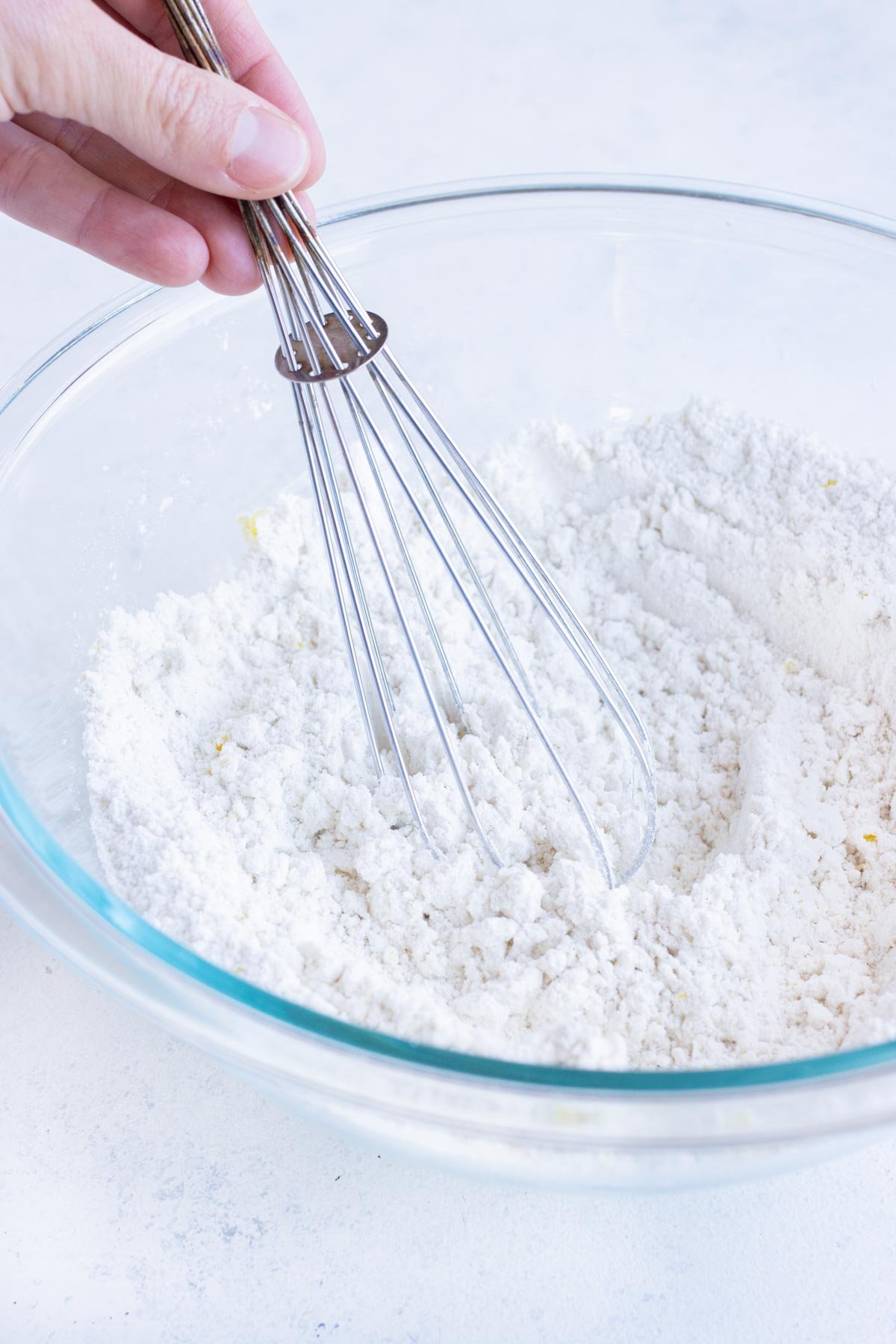
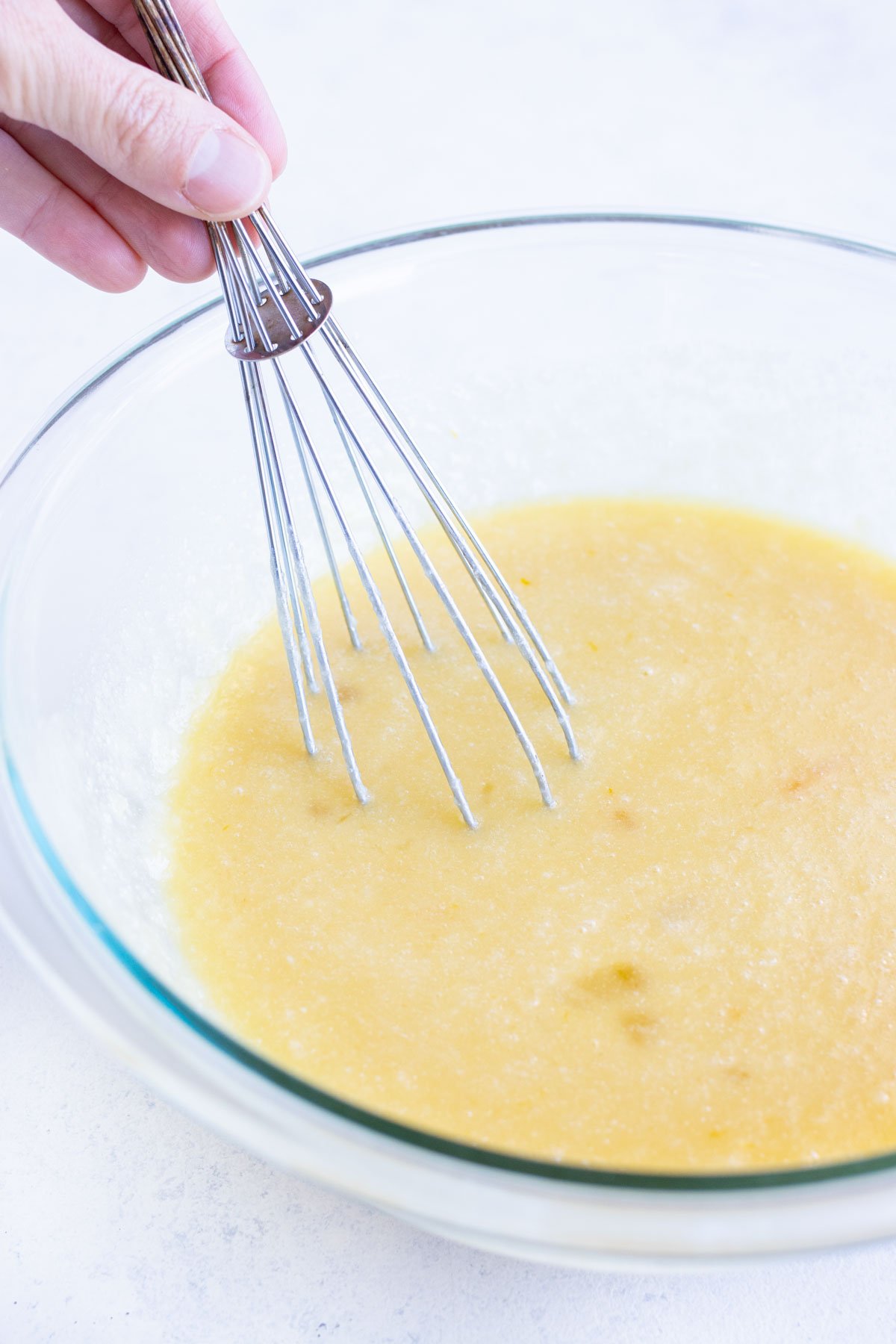
Mix Together
Pour the wet ingredients into the dry ingredients, and begin carefully folding the mixture with a spatula until well combined.
Using a flexible spatula made of silicone or rubber is recommended, as it can be used to fully scrape the bottom and sides of the bowl.
The mix should be folded rather than stirred so that it stays light and airy. Don’t over-mix the batter, as knocking out the air makes the bread dense and chewy.
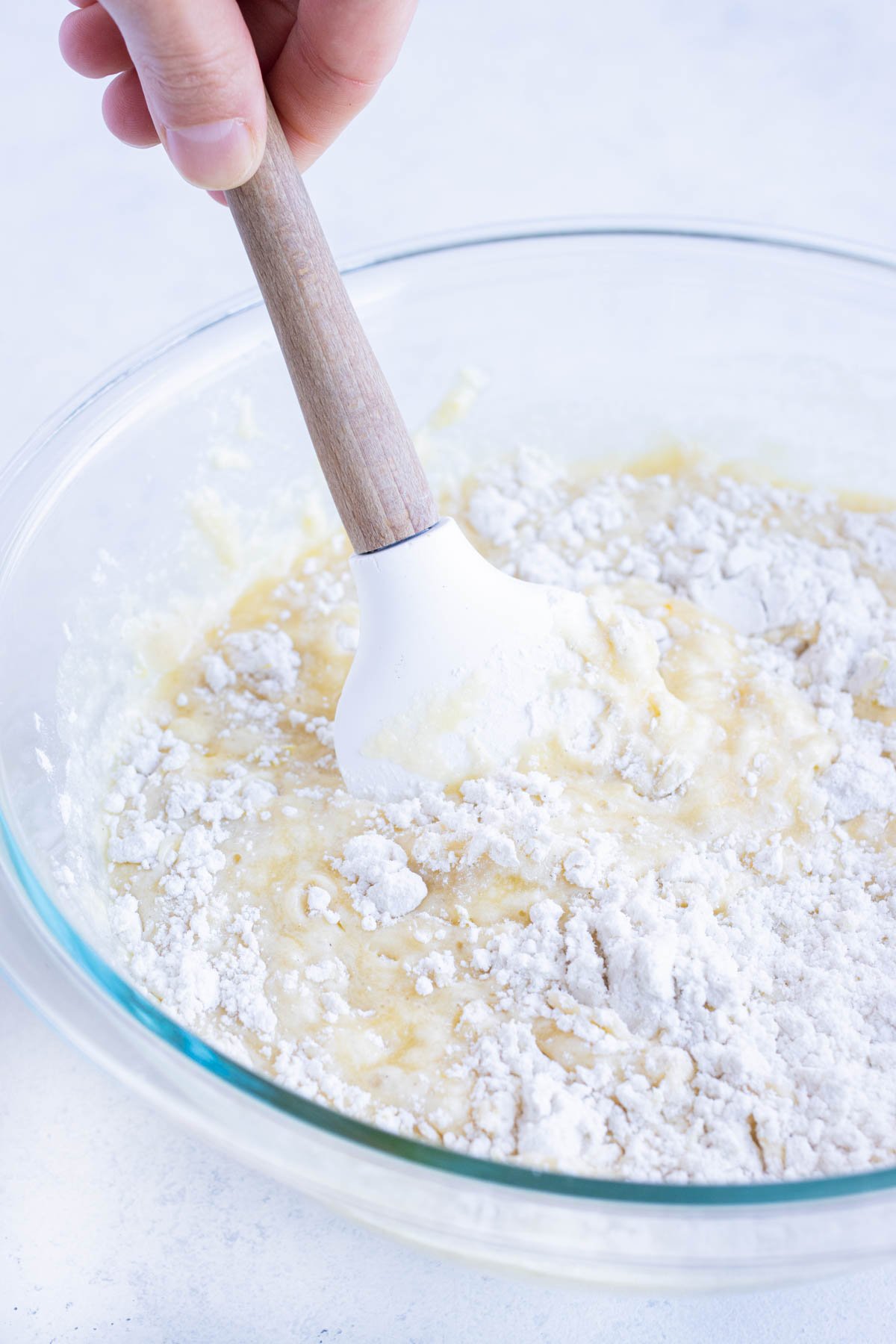
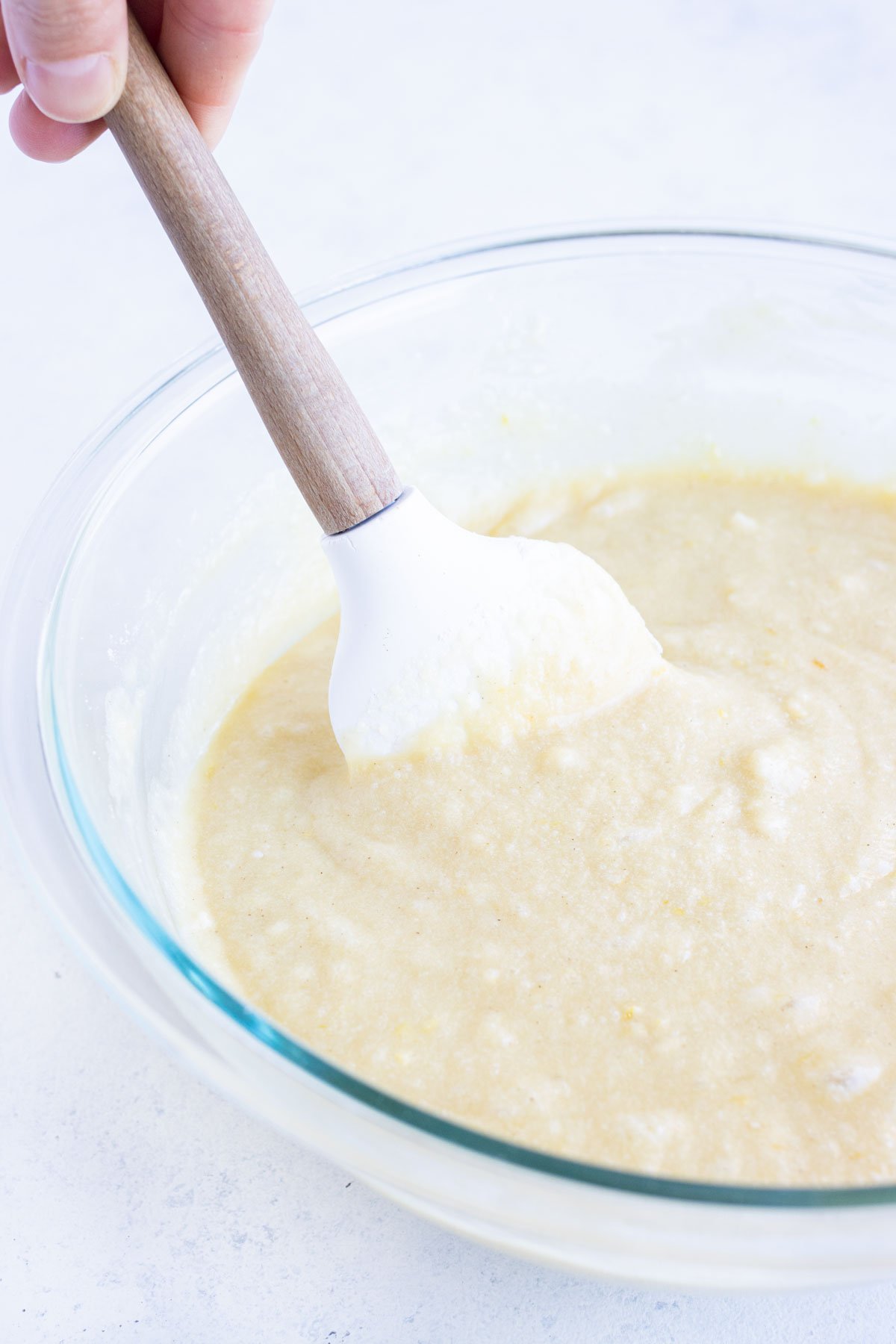
Line and Pour
Prepare a 9×5-inch loaf pan by lining it with parchment paper, and spraying it with a neutral non-stick cooking spray. This adds a light layer of insulation that keeps the bottom from over-baking, and makes removing the loaf easier once baked.
Pour the mix into the prepared pan, using the spatula to scrape the sides of the bowl and collect all of the batter. Gently jiggle the pan to ensure it settles in an even layer across the top, being careful not to knock out the air with rough handling.
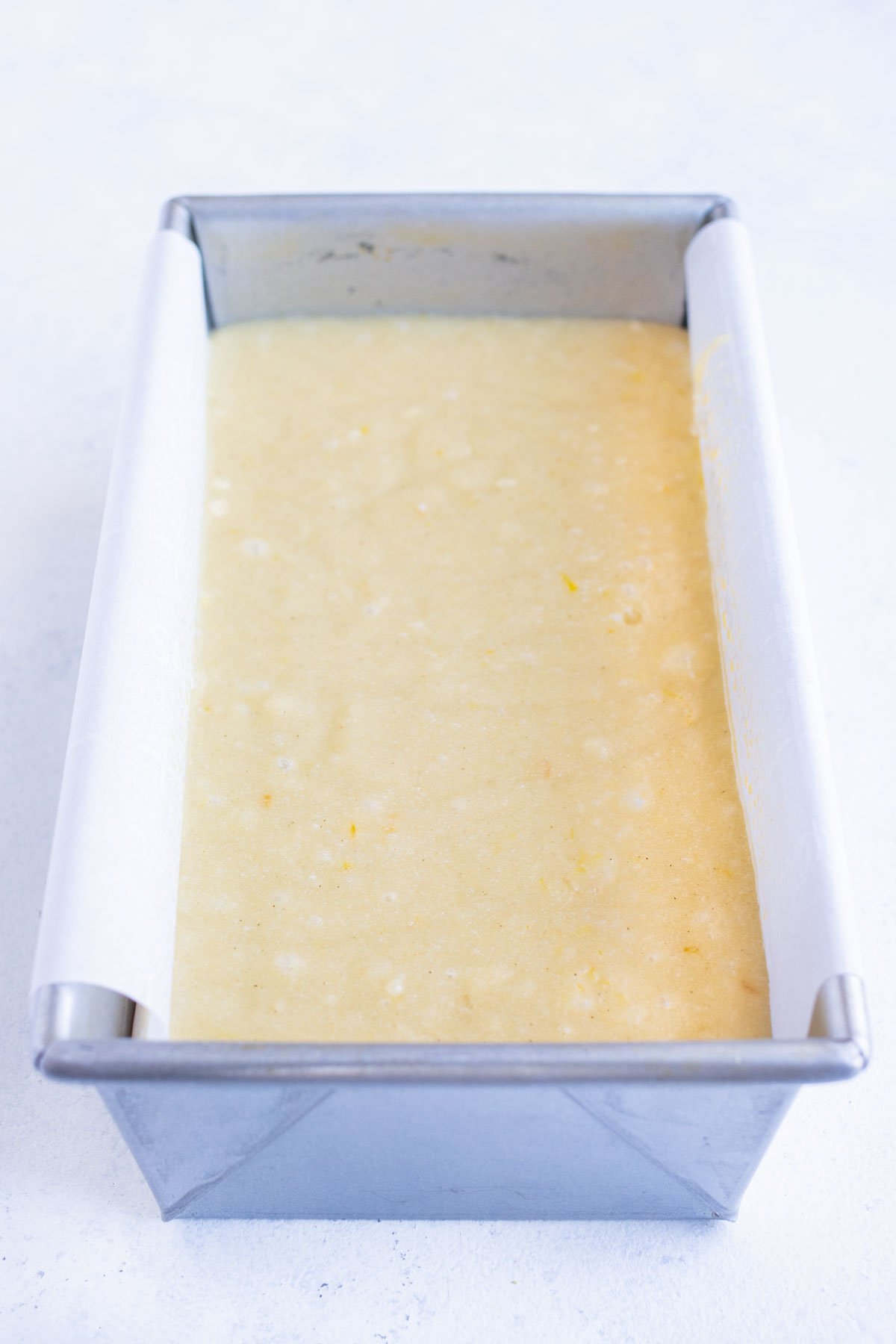
Bake and Glaze
Preheat the oven to 350°F, and bake the bread for 45-55 minutes.
You’ll know it’s done baking when it’s golden-brown on the top, and when a toothpick inserted into the center comes out clean.
Remove the pan from the oven, and set it on a wire rack to begin cooling to room temperature, about an hour. You can speed this part up by popping it into the refrigerator or freezer.
Once the bread is cooled, in a small bowl whisk together the powdered sugar, 1 tablespoon of milk, and 1 tablespoon of lemon juice until smooth.
The sweet lemon glaze should be thin enough to spread in a smooth and glossy layer, but thick enough to not run down the sides of the pan. A small amount of either milk or powdered sugar may be used to tweak the consistency, if needed.
Leaving the loaf in the pan, pour the glaze over it and gently spread it to the edges to make a clean, even layer on top. After a few seconds, it should smooth out to a glossy finish.
Let the loaf rest at room temperature for a few hours to cool completely, or transfer it to the fridge to speed up the process.
Once the lemon glaze has hardened, carefully remove the loaf from the pan and peel away the parchment paper. Slice the bread, and enjoy!
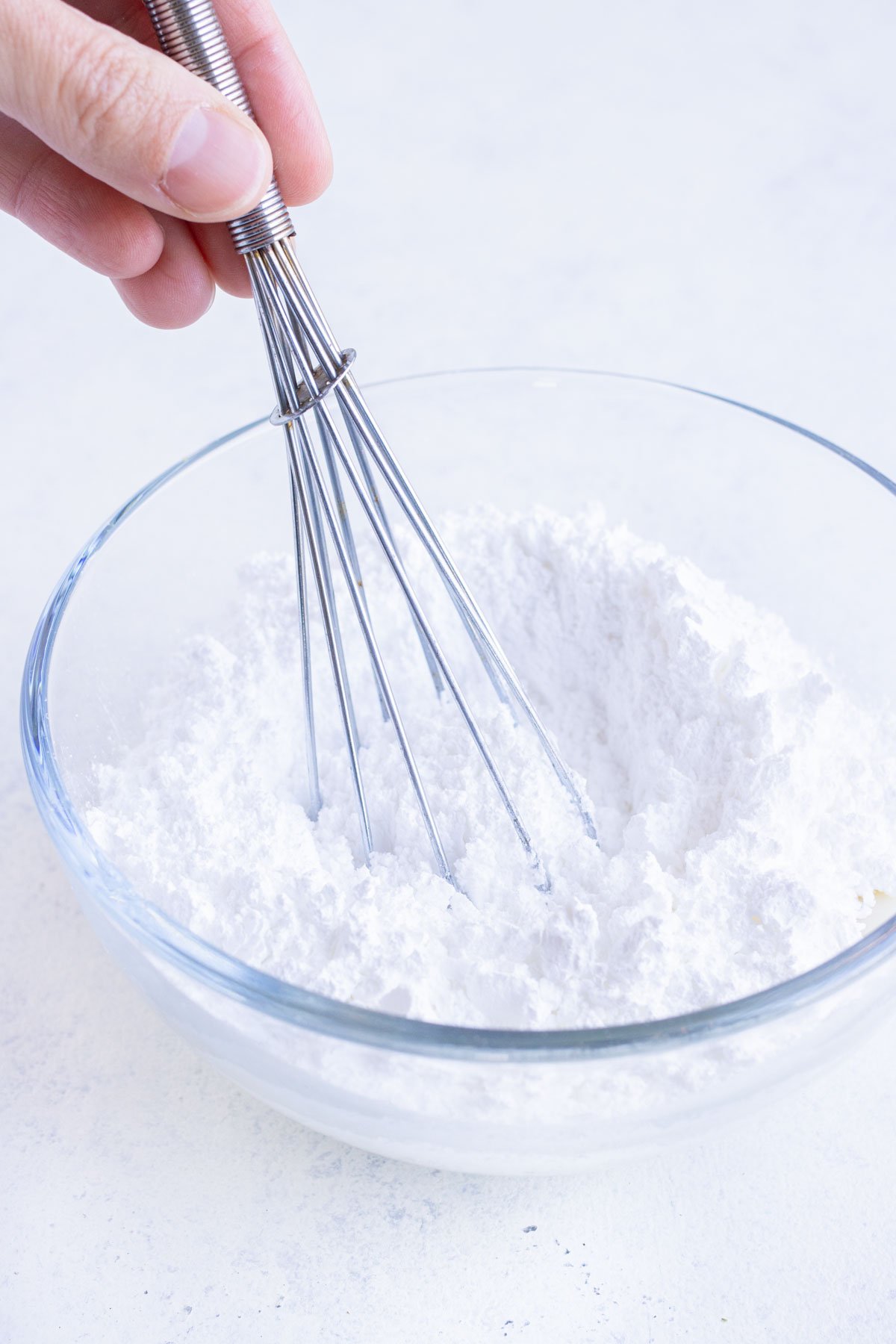
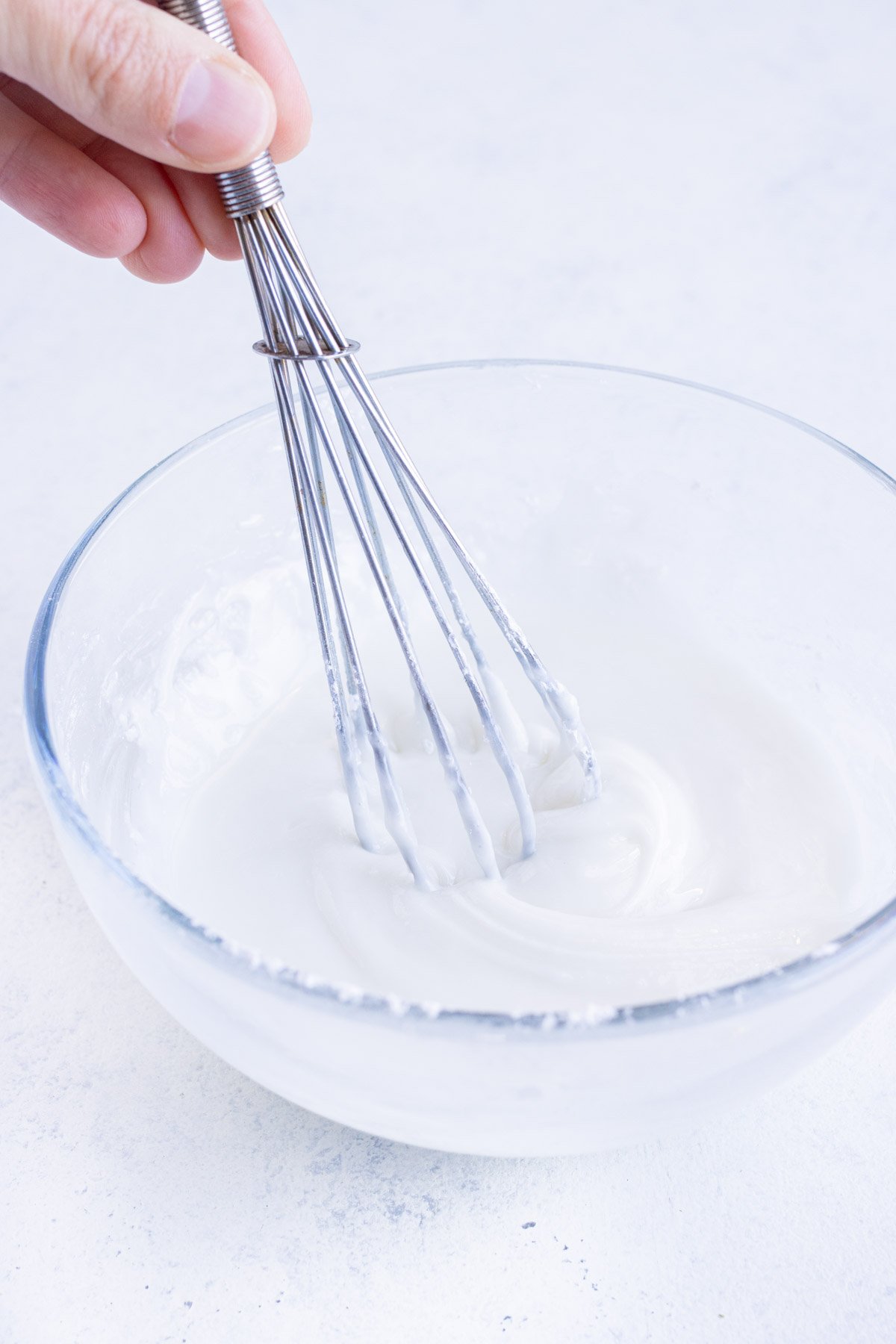
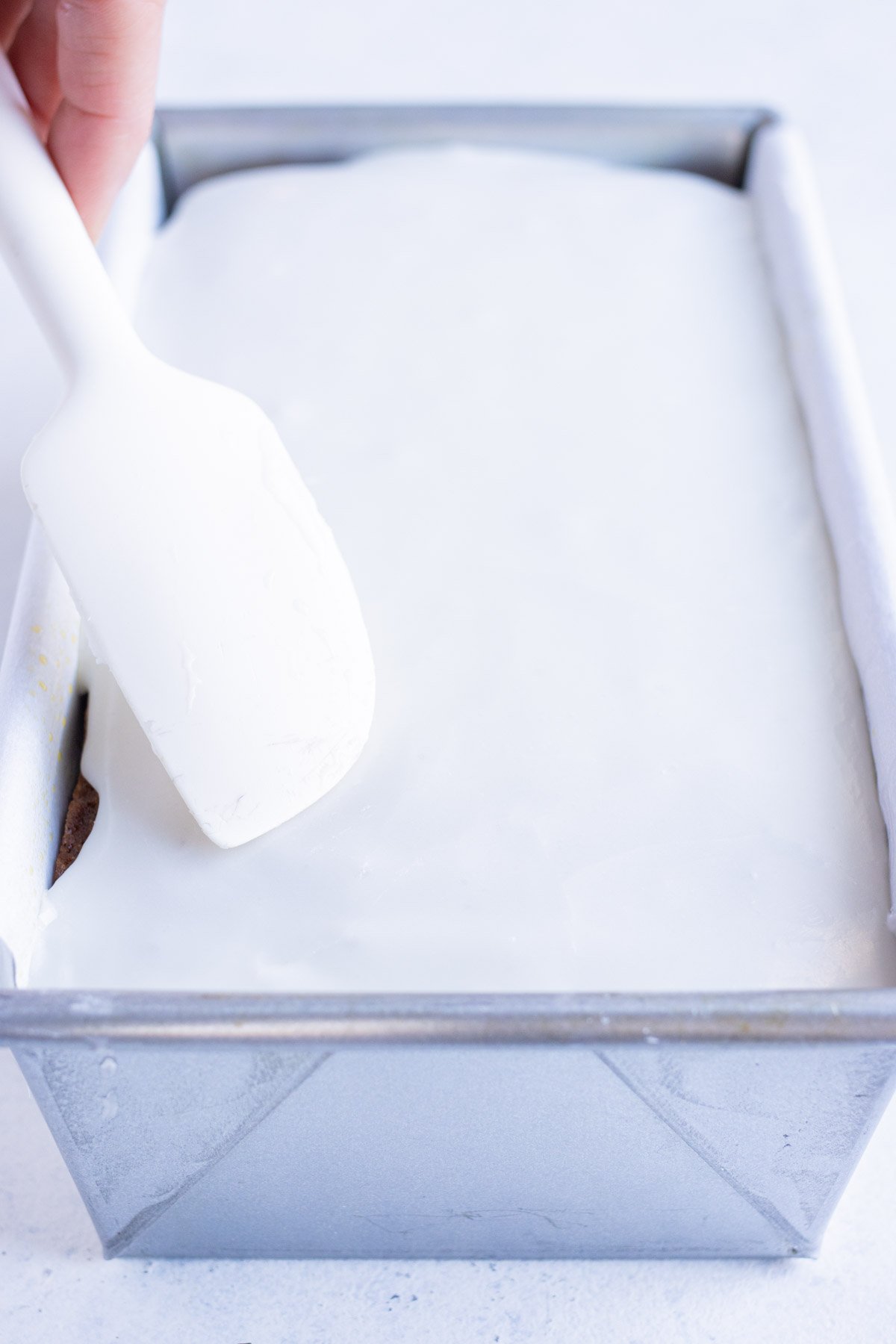
Meal Prep and Storage
- To Store: Lemon bread can be stored at room temperature, covered in plastic wrap or in an airtight container, for up to 2-3 days. It can also be stored in the fridge for up to 5 days, but it may dry out slightly.
- To Freeze: Wrap the lemon bread in at least 2 layers of plastic cling wrap and store inside a freezer-safe Ziploc bag, to freeze it for up to 3 months.
- To Reheat: It is recommended to let the loaf come to room temperature before attempting to warm it. Slices may be gently warmed in the microwave in 20-second bursts, at 50% power. Overheating may dry out the bread or cause the icing to melt away.
Dietary Modifications
The recipe you’ll find below is already gluten-free, dairy-free, and vegetarian as written. Here are some adjustments and substitutions you can make to help it fit your other dietary requirements:
- Vegan: Substitute the egg for a vegan alternative, such as aquafaba, a chia egg, baking soda and apple cider vinegar, or pureed applesauce or banana.
- Low-Carb/Keto: For the loaf, use a Paleo/keto flour baking blend, stevia or monk fruit extract for sweetener, and a low-carb milk alternative like coconut or almond milk. For the glaze, use powdered erythritol and cream of tartar as an alternative to confectioner’s sugar.
- Paleo: Substitute a grain-free flour alternative like coconut and almond flour, ghee or coconut oil for butter, a dairy-free milk, and a sugar substitute like stevia, monk fruit, or raw honey.
- Refined Sugar-Free: Use a natural sweetener such as finely-ground raw cane sugar, coconut sugar, stevia, or monk fruit.
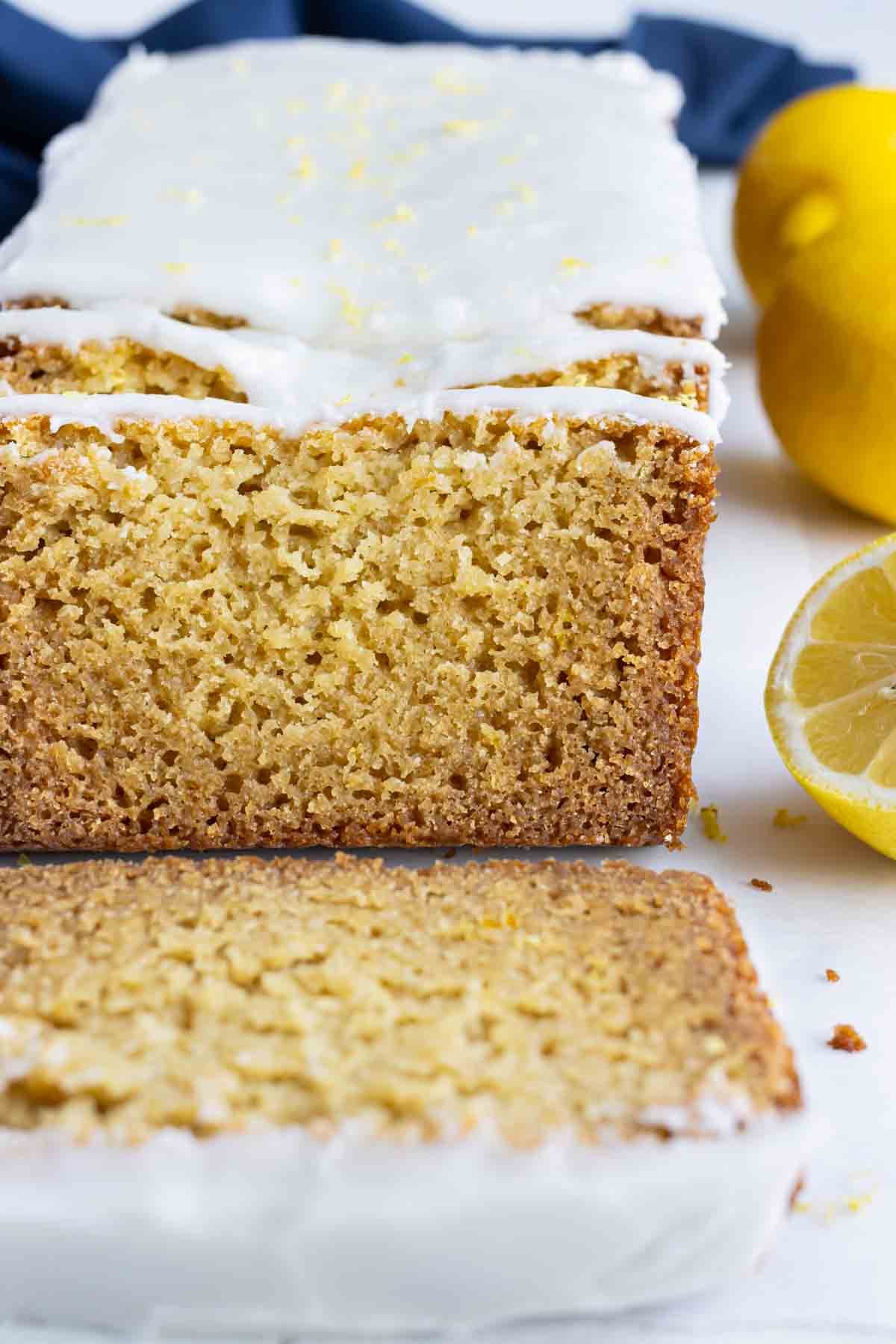
FAQs
For the sake of flavoring, lemon extract can absolutely be used as an alternative to fresh lemon juice. For every 2 tablespoons of lemon juice, substitute 1 tablespoon of lemon extract and 1 tablespoon of water, to ensure the proper liquid ratio is still maintained.
Although it will make the bread more dense, ¼ of sour cream or Greek yogurt can add a little extra moisture to the loaf.
The acidity in lemon juice helps to activate the leavening properties of elements like baking soda, giving quick breads in particular a more light texture without having an extended proofing period.
Expert Tips and Tricks
- Don’t use cold ingredients. Take the portioned milk, eggs, and butter out of the fridge 30-60 minutes before starting, to come to room temperature.
- Keep it fresh. Zest and juice the lemons right before making the bread, to ensure the flavors are as bright and vibrant as possible.
- Use a sifter. Using a fine-mesh strainer or sifter to mix the dry ingredients ensures consistency and a lighter texture in the bread.
- Change the shape. Use mini loaf pans or a bundt pan to change the look of this dish, but be wary of differences in baking time.
- Don’t skip the paper. Make sure to carefully line your pan with parchment paper and non-stick spray, so that the loaf comes out smoothly.
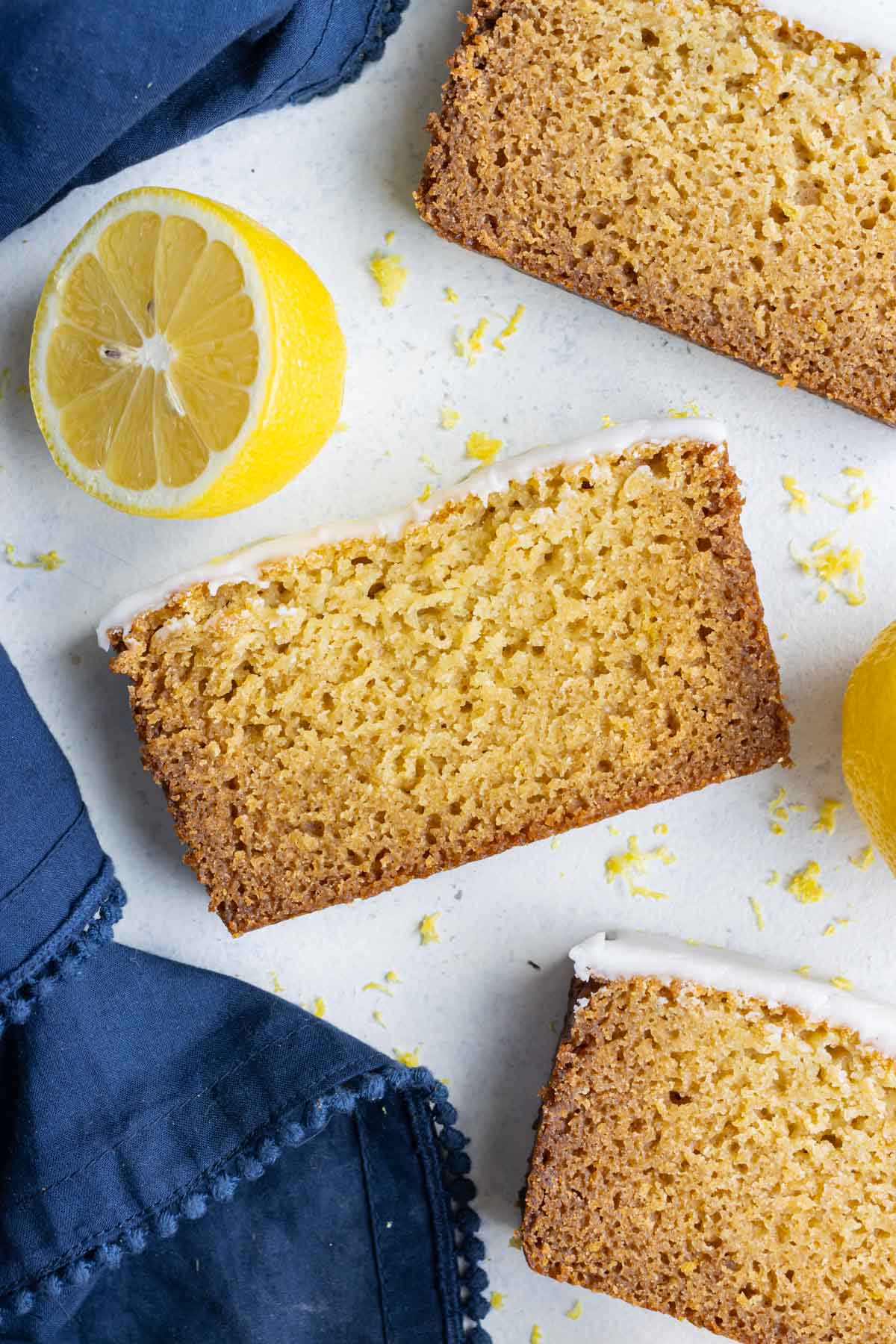
More Quick Bread Recipes
Skip the long proofing times while still enjoying delicious, tender breads with these quick recipes:
- Pumpkin Banana Bread
- Double Chocolate Zucchini Bread
- Healthy Apple Bread
- Healthy Lemon Zucchini Bread
- Gluten-Free Vegan Bread
Tap stars to rate!
Lemon Bread Recipe (Starbucks Copycat)
Email this recipe!
Ingredients
Lemon Loaf
- 1 ¾ cup all-purpose flour or gluten-free 1-to-1 blend
- 1 ½ tsp. baking soda
- ¼ tsp. salt
- 1 Tbsp. lemon zest
- ¾ cup butter melted
- ¾ cup sugar
- ¼ cup honey
- ½ cup milk regular or oat
- ¼ cup lemon juice
- 1 tsp. vanilla extract
- 2 eggs large
- 1 egg yolk
Glaze
- 1 cup powdered sugar
- 1 Tbsp. milk regular or oat
- 1 Tbsp. lemon juice
Instructions
- Add flour, baking soda, salt and lemon zest to a large bowl. Whisk until all ingredients are evenly dispersed.1 ¾ cup all-purpose flour, 1 ½ tsp. baking soda, ¼ tsp. salt, 1 Tbsp. lemon zest
- In a separate bowl, whisk together butter, sugar, honey, milk, lemon juice, and vanilla. Once the butter has cooled, mix in eggs and the egg yolk until fully incorporated.¾ cup butter, ¾ cup sugar, ¼ cup honey, ½ cup milk, ¼ cup lemon juice, 1 tsp. vanilla extract, 1 egg yolk, 2 eggs
- Pour wet ingredients into the dry ingredients. Fold the mixture with a spatula until all of the ingredients are well combined, being careful not to overmix.
- Pour the batter into a 9×5-inch loaf pan that has been lined with a piece of parchment paper and then sprayed with non-stick cooking spray. Bake at 350 degrees for 45-55 minutes, or until a toothpick, when inserted into the center, comes out clean.
- Once the loaf has completely cooled, whisk together the glaze ingredients in a medium-sized bowl. Pour the glaze over the loaf and then spread to completely coat it. Let the loaf rest for a few hours so the glaze can harden. (You can speed this up by popping it in the refrigerator.) Slice and enjoy!½ cup milk, 1 Tbsp. milk, 1 Tbsp. lemon juice
Tap stars to rate!
Notes
Meal Prep and Storage
- To Store: Lemon bread can be stored at room temperature, wrapped in plastic wrap or in an airtight container, for up to 2-3 days. It can also be stored in the fridge for up to 5 days, but it may dry out slightly.
- To Freeze: Wrap the lemon bread in at least 2 layers of plastic cling wrap and store inside a freezer-safe Ziploc bag, to freeze it for up to 3 months.
- To Reheat: It is recommended to let the loaf come to room temperature before attempting to warm it. Slices may be gently warmed in the microwave in 20-second bursts, at 50% power. Overheating may dry out the bread or cause the icing to melt away.
Nutrition
Nutrition information is automatically calculated, so should only be used as an approximation.
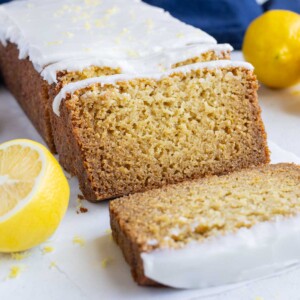
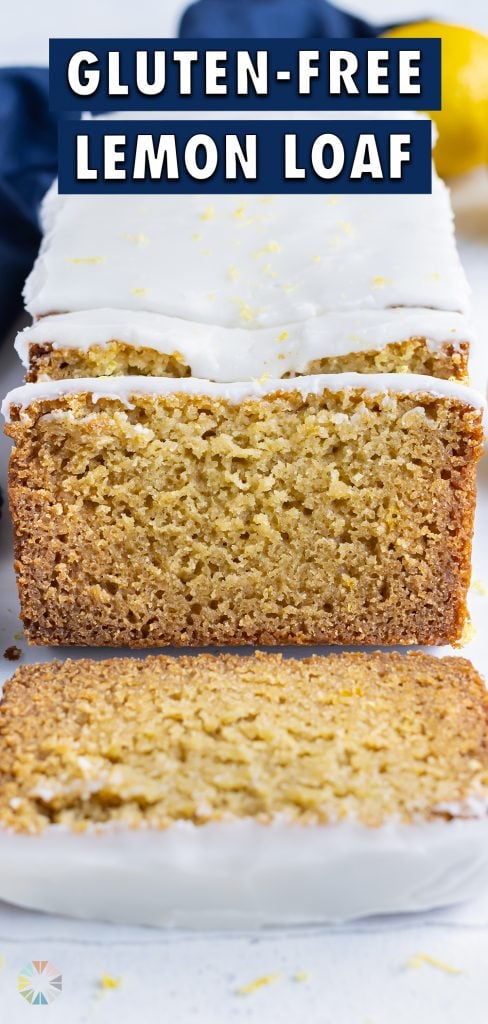














this recipe sounds very delicious!
Thanks so much for taking the time to leave a comment and rating!